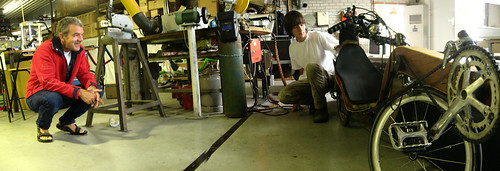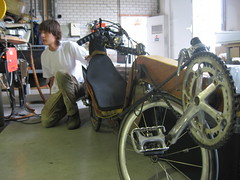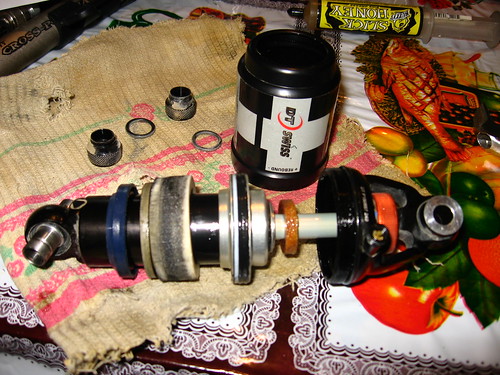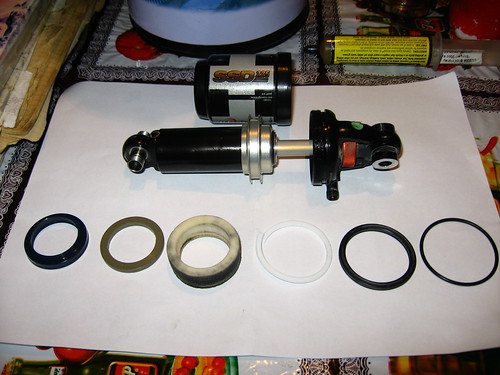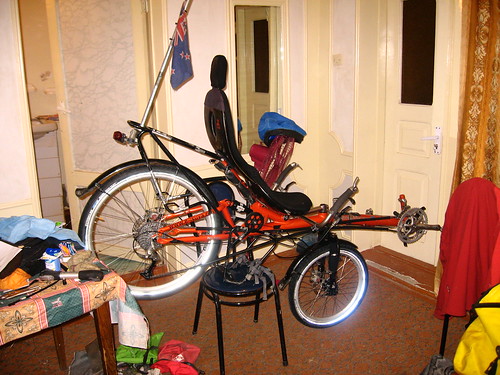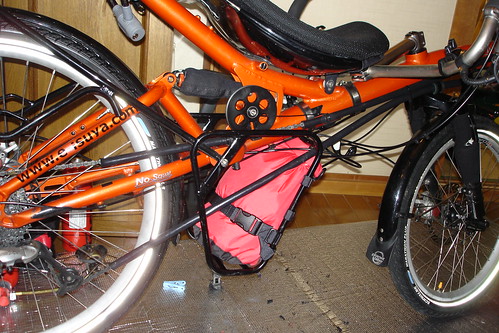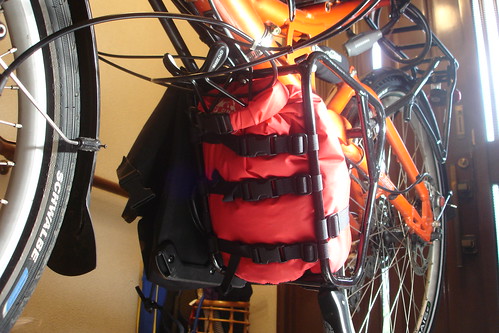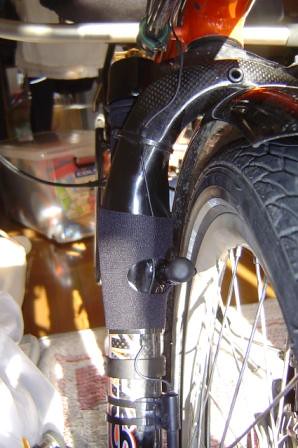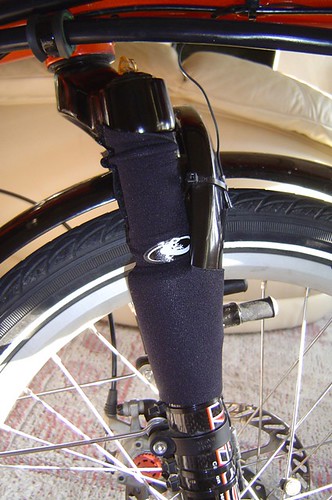Waaay back in Switzerland when I decided to send my bike back to New Zealand, I got a shock when I did some research on how much it was going to cost to get a regular sized bike box to New Zealand. I was even considering just leaving the bike in Switzerland due to the high cost. It was going to cost 300 Pounds Stirling to get it to New Zealand. Big bucks.
The only solution I could figure out was to try to get the bike into a smaller box. That way, I would be able to send it surface post via the local post office, rather than through a dedicated shipping company. This meant that I had to take the bike to bits big time. The bike is full suspension, so the frame breaks down into three separate bits. With no intention to re-use the cables etc once I got back to New Zealand, I threw those out. I did the same for the chain tubes. Putting the thing back together and getting all the parts took the better part of two days.
I got the bike together in the end, but not without some improvisation.
A standard recumbent bicycle uses a chain three times the length of a standard upright bicycle chain. Often the chain runs through plastic tubes to stop the chain from rubbing on clothing, and to keep dirt off the chain. After 12,000km, the original chain tubes on my bike were well and truely worn, despite them being made of low-friction PTFE plastic.
Even in Auckland, the biggest city in New Zealand, I could not find PTFE tubing in the correct size (15mm outside diameter, with at least 1mm wall thickness). So I had to settle with the slightly less friction resistant polyethelene garden irrigation tubing.
A small but significant challenge was moulding the tubing to my use. I had to straighten the tubing, which was easy enough (pour boiling water down the tubing while holding the tubing upright). I also had to spread the ends of the tubing in order to prevent the chain from catching on the edges of the tube.
TOP TIP: How to Spread the Chain Tube Ends for a Street Machine GTe Recumbent Bicycle
For this trick, you’ll need three things; a bottle of Finish Line chain lube, a cup of boiling water, and your chain tube cut to the correct length.
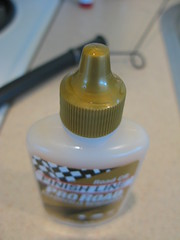


Put the end of the chain tube in the boiling water for 30 seconds.

Remove the chain tube and quickly transfer it to the lube bottle cap without delay. Once over the tip of the cap, push down firmly so that the soft end forms to the shape of the cap. Push down enough so that the edges of the tube push past the edge of the cap by about 1mm. You’ll need to really shove hard.
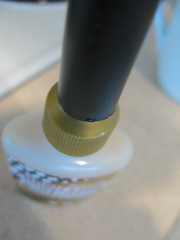
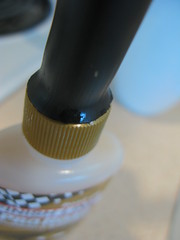
Keep the pressure on for about 20 seconds, and then remove the chaintube from the cap. If you remembered to put the chain tube guide on before you started (for a Street Machine GTe) then you can now slide the chain tube into place.
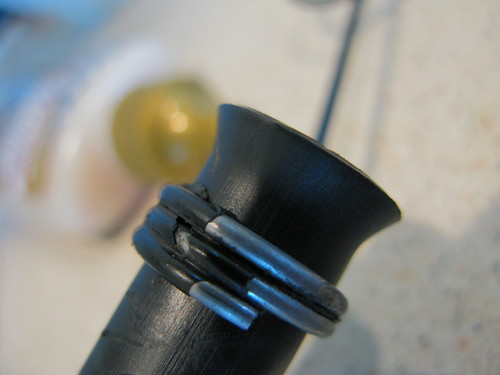
![]() His name is David Wielemaker.”
His name is David Wielemaker.”





